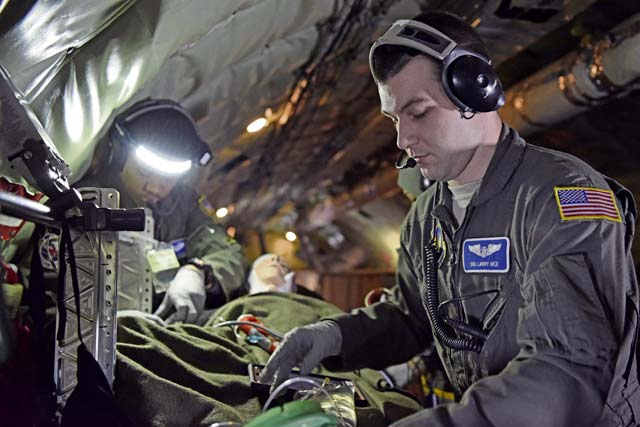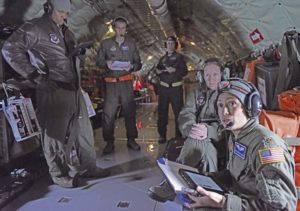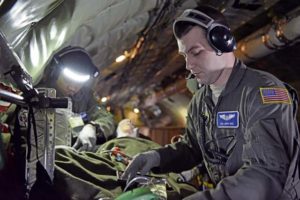
Members of the 86th Aeromedical Evacuation Squadron from Ramstein Air Base performed training aboard a KC-135 Stratotanker from RAF Mildenhall, England, Jan. 23.

During the training, members practiced emergency medical scenarios, including patients suffering worsening health conditions, cardiac emergencies, aircraft decompression and emergency ditching of an aircraft.
“We perform this training to ensure our squadron is at full readiness and proficiency,” said Maj. Maria Rocio Vazquez, 86th AES medical crew director.
“There are many times during real-world situations when an aircraft has an emergency and we have patients experiencing different health conditions,” Vazquez said. “So we must respond in the correct way, and exercises like this allow for us to brush up on different skills.”
The 86th AES are charged with providing aeromedical care for both U.S. European Command and U.S. Africa Command, which is the largest area of responsibility out of all existing AE squadrons.
The KC-135 Stratotanker from the 351st Air Refueling Squadron, which provided aerial assistance during training, was piloted by Capt. Jonny Benson and Capt. Jason Douglas. The boom operator on board was Tech. Sgt. Grant Ringenberg.
The KC-135 is a versatile aircraft which is able to transport people and cargo in addition to its air refueling role.
“Piloting during aeromedical evacuations is of the utmost importance not only to our mission in U.S. Air Forces in Europe-Air Forces Africa, but all across the Air Force,” Douglas said. “There is always the possibility of facing dangerous real-world situations that will call for not only our crew, but the medical crew and support agencies to be prepared for, and this training provides ample opportunities to sharpen our skills across the board.”

The AE team consisted of two flight nurses, three aeromedical technicians and a collection of instructors and evaluators who graded the annual evaluation of the team.
“Our main mission is to always provide global patient movement during wartime and peacetime,” Vazquez said. “Whether it is a mass casualty situation or one involving military dependents, our team must always be prepared to answer the call.”
According to Vazquez, most aeromedical squadrons consist of 80 to 90 personnel, which include doctors, nurses, administration and other assorted specialties.
As one of the evaluators on board, Staff Sgt. Kyle Pancheco described how critical this training is for his entire team.
“Every time we undertake an evacuation training, it is essential we understand the need for increased flexibility for the airframes we perform medical procedures on,” Pancheco said. “We normally fly on C-17s and C-130s, but in an ever-changing theatre, we must always be prepared to take our work elsewhere.”
With that said, Vazquez expressed how pleased she was with how this stint of training was performed.
“Things never go as you plan, but I believe it went very well,” Vazquez explained. “Whether it’s changing flight plans, patient conditions or whatever else is thrown our way, we must be flexible and complete the mission.”


